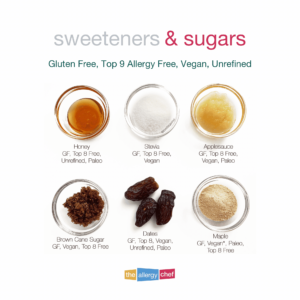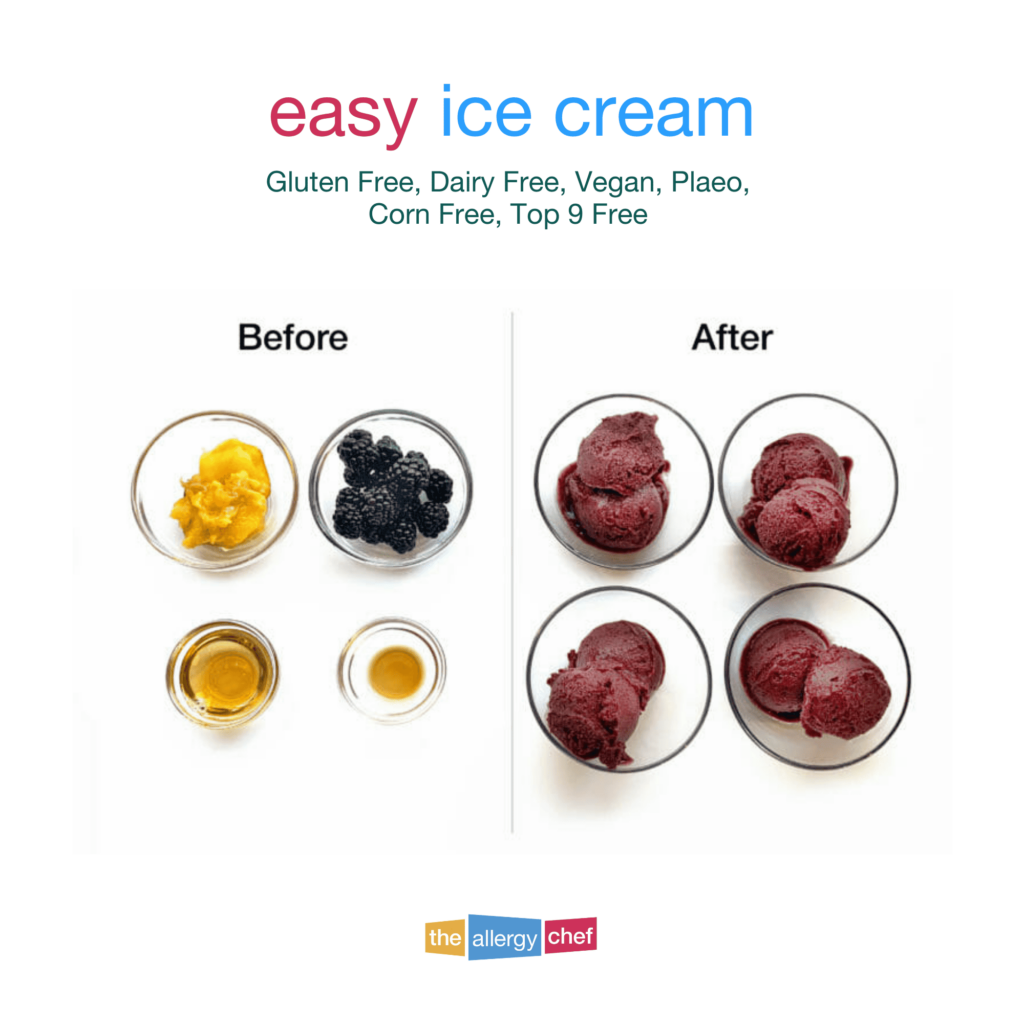There are SO many alternative sweeteners on the market these days, and it can be very difficult to decide which is best for you. Full Disclosure: whilst I have working knowledge of most of these options, I am unable to use or experiment with just about all of them due to allergies in our home. It really comes down to my severe corn allergy. Many alternative sweeteners say “this comes from XYZ” but when you call, you’ll learn it’s actually corn derived.
Today I’ll be sharing what the options are, a bit of my opinion, and hopefully you’ll have a better understanding of which sweeteners could work for you.
Also, I’m only scratching the surface on sweeteners today. You may read this article and feel like you’ve heard enough, or, this may get you excited to learn a lot more.
Related Article: Back To School Help: Snacks and Sugar Info
Low/No Sugar Basics
Sugar can be defined in so many different ways. What most are familiar with would be white sugar aka cane sugar aka table sugar aka refined sugar. Sugar cane is a plant in the grass family and grows in tall stalks. There’s machinery that presses the canes so they release their sweet juices. If you ever have the chance to drink pure sugar cane fresh pressed, it’s a very interesting flavor.
Join RAISE Today and enjoy gluten free, allergy friendly, refined sugar free recipes.
From sugar cane we derive molasses, turbinado sugar (sugar in the raw), dark brown sugar, light brown sugar, cane/white/table sugar, cane juice, and glucose.
Anything ending in ‘ose’ refers to sugar. Lactose = Milk Sugar
One may be low/no sugar due to an allergy, intolerance, or specific special diet. If you need more information online, do a web search for your diet type + sweetener. For example, type 1 diabetic sweetener, or keto sweetener. From there you should be able to find more info on options to start with.
If you’re struggling with meal ideas outside of super basic combos (meat and vegetables), check out this FREE Three Day Refined Sugar Free Meal Plan (also gluten free and top 9 allergy free).
Natural Alternative Sweeteners Vs. Artificial Sweeteners
These days the market has been flooded with (natural) alternative sweeteners and artificial sweeteners, and it’s important not to be confused by the two.
Artificial sweeteners have been shown to cause SO MANY problems health-wise. I have a friend that has seizures when served artificial sweeteners… Artificial sweeteners you’ve heard of may include:
- Aspartame
- Saccharin
- Sucralose
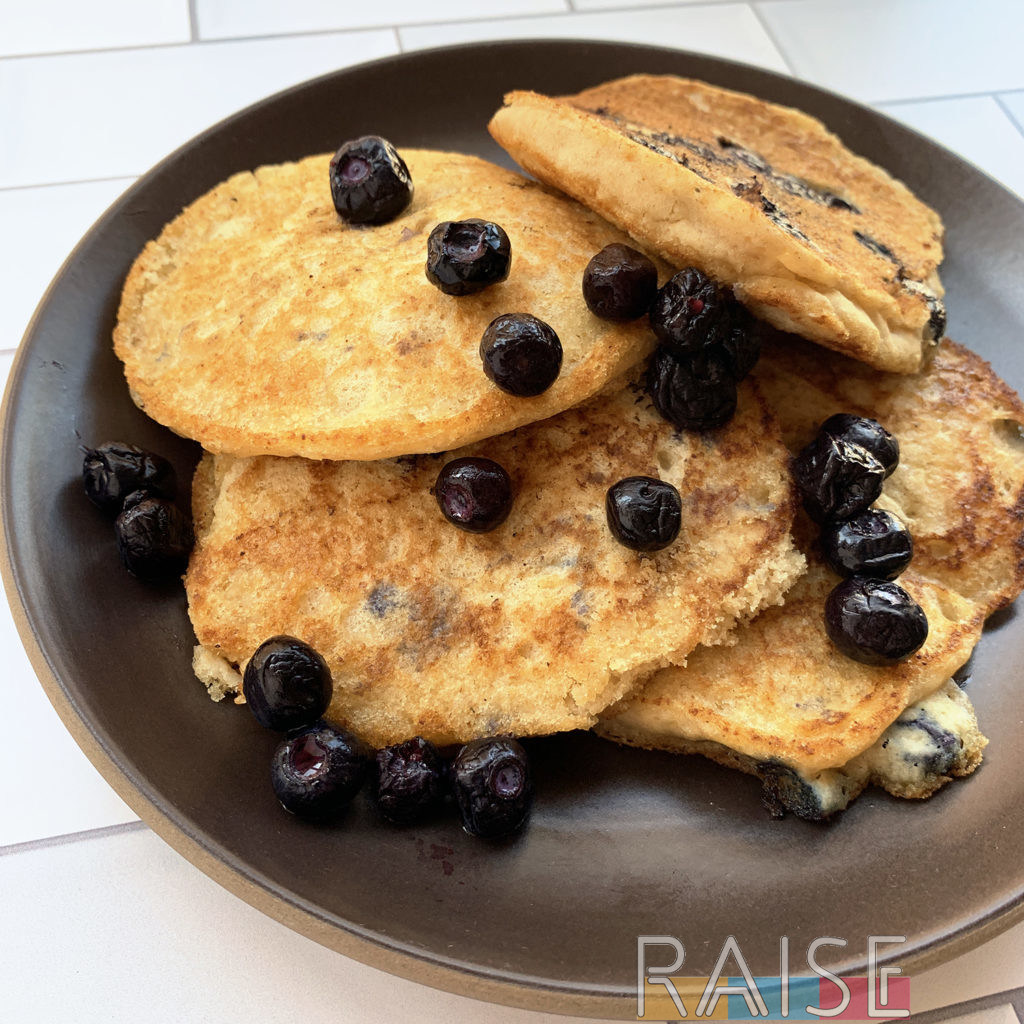 Related Recipe: Ultimate GF Fluffy Pancakes, refined sugar free
Related Recipe: Ultimate GF Fluffy Pancakes, refined sugar free
Natural alternative sweeteners on the other hand come from plants, are generally heavily processed (which is why I avoid so many), and are sold commercially. These include:
- Agave
- Apple Syrup
- Coconut Nectar and Coconut Sugar
- Date Sugar and Date Syrup
- Erythritol
- Honey
- Maple Sugar, Maple Syrup and Maple Butter (dairy free)
- Monk Fruit
- Rice Syrup
- Stevia Plant
- Stevia Powder
My personal preference for our household: honey, date, and maple. These three are closest to their original form with the least amount of processing (and easy to purchase). I’m personally not OK when you take a green plant such as stevia leaf and sell it as a white powder. Additionally, some natural sweeteners such as agave go through a lot of intense processing to end up with a highly concentrated form of sugar.
Before Changing Your Diet, Know Why You’re Low/No Sugar
You may be facing any of these:
- Diabetic
- Fructose Intolerant
- Sugar Cane Allergy
- Grass Family Cross Reactive
- GI/Candida Issues
- Special Diet (Paleo, GAPs, AIP, SCD)
- Other Health Reasons
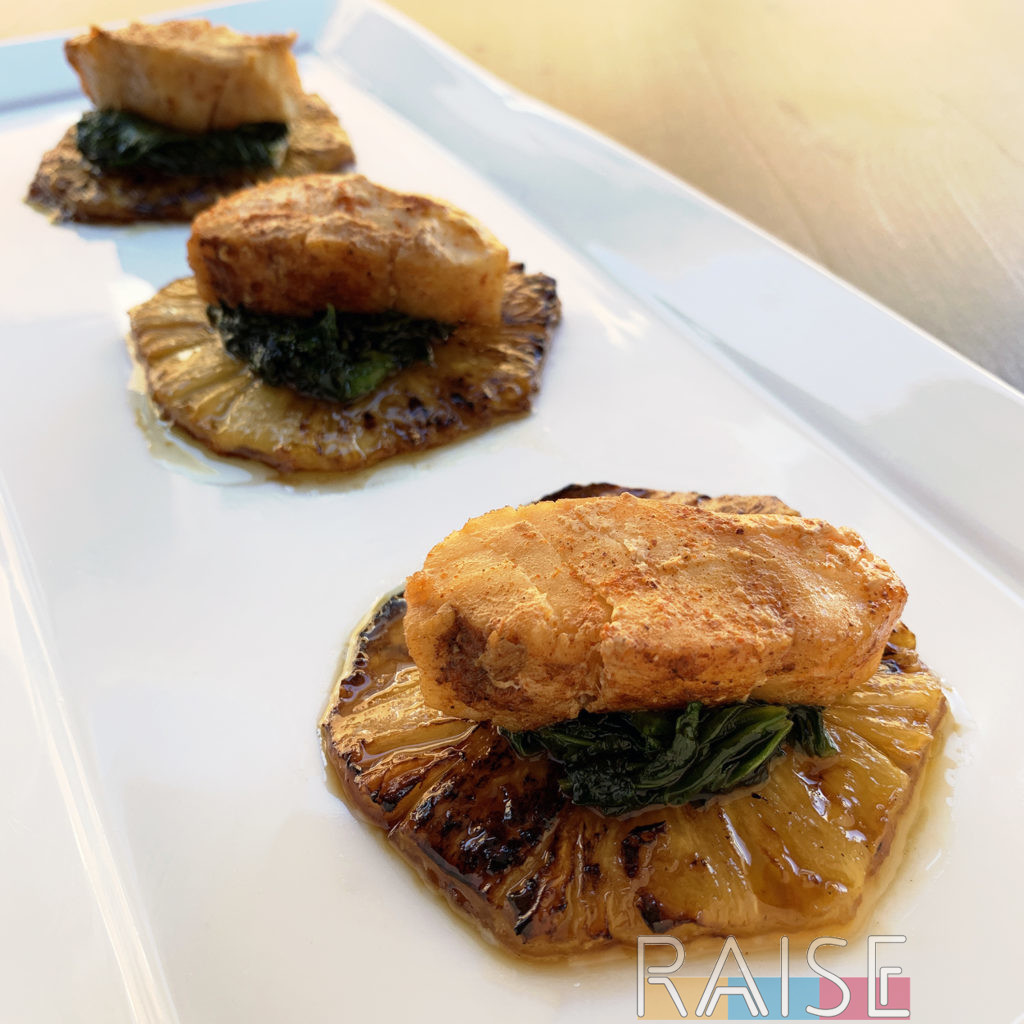 Related Recipe: Seared Pineapple & Smoky Cod, refined sugar free
Related Recipe: Seared Pineapple & Smoky Cod, refined sugar free
From there, you can make the best choice for you. Some of you will need to look at the glycemic index (GI) scale of each sweetener and use what’s right for you. For others, you’ll need to use what’s legal/allowed on the diet you’re following. For some, none of the options in this article will be an option.
At the end of the day, you need to do what’s right for you. The RDA for sugar in the US is 37.5/g a day for men and 25/g a day for women. It’s also referenced as no more than 10% of your daily calories. In the UK the RDA is 30/g per day for people over the age of 11.
The RDA Numbers Are For Added Sugar
It’s important to note that those are the recommendations for ADDED sugars. Anything not in the food naturally is added. For example, a glass of whole milk has 9g of sugar from naturally occurring lactose. Those 9 grams wouldn’t normally count against you. Once you add your favorite chocolate syrup with 15g of sugar per serving, that’s where the counting starts.
If you’re not careful, you’ll hit your RDA before lunch time, especially if you eat like an average American.
Keto Sweeteners aka Zero Calorie Sweeteners
You may have heard of options such as erythritol, xylitol, or sorbitol. These are also known as sugar alcohols. There’s an awesome Wikipedia page all about erythritol which will help you understand them better.
I generally don’t use any of these products when developing recipes mainly because corn can be part of the process. As a rule, I keep as much corn derived foods out of our home as humanly possible.
Living Corn Free? Check out the Corn Free Cookbook (also GF and Top 9 Free)
There are a few packaged snacks I’ve had the kids try that contain these sugar alcohols. Generally speaking, they’re not impressed.
However, if this is what you NEED, then it’s worth learning all about the commercial options, and what will be safe for you. You’ll also need to road test the sweetness, and balance your ratios.
What If I Don’t Want (Or Can’t Have) Any Of These Options?
It’s totally OK to want to avoid anything that’s been moderately or highly processed. For people who truly want a pure and natural option, apples may be your best bet, specifically a sweeter variety such as Fuji.
You can make homemade applesauce, or juice your apples for an at-home sweetener option. When using fruits as a sweetener, you’ll want to avoid citrus, tart, and bland fruits. The upside to doing this at home – you know your taste-buds best.
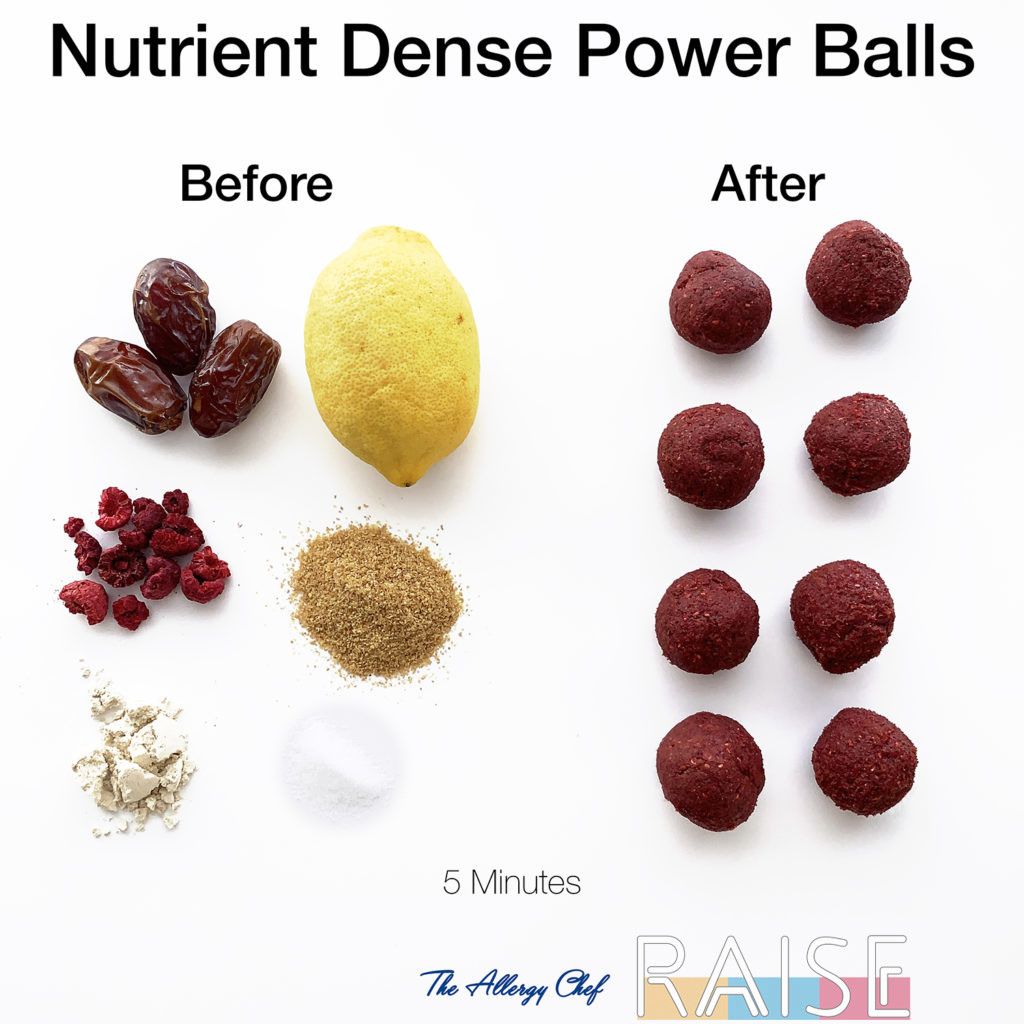 5 Minute Recipe: Nutrient Dense Power Balls
5 Minute Recipe: Nutrient Dense Power Balls
Dates are also another awesome fruit-based option for vegans, and unrefined/raw honey is great for people who can have it.
For The Few Of You That Can’t Tolerate A Single Item In This Article
Stick with savory. Let’s go out on a limb and assume that the only safe fruit you can have is blackberries. They aren’t really that sweet and shouldn’t be used as a substitute.
For people in this situation, I find it’s best to indulge in the savory side of food, and find items that compliment what you can have. For example, I’d make an almost bland bread, and serve it with blackberries. The little bit of sweet that blackberries have will give you the illusion of a dessert-like food. I’d also make simple waffles and serve with blackberries.
Outside of that, learn how to enjoy your spice rack and experiment with all sorts of flavours. The Flavor Bible is an excellent reference book for flavour pairings that can really help you improve the flavor of your recipes.
Six Common Natural Sweeteners to Purchase
Below are six of the most common natural forms of sugar you’ll be able to purchase. If online shopping is your jam, you’ll have access to many more.
Honey
I love using honey for cooking. My kids really enjoy recipes such as Honey Ginger Salmon & Rice (Gluten Free, Allergy Friendly) and Gluten Free Soy Free Chicken Chow Mein Memory Recipe (Top 9 Free)
If you decide to explore expensive varieties such as Manuka honey, make sure you’re getting authentic honey. Turns out, there’s a LOT of fraud in the honey industry.
Stevia
It’s rare that I purchase stevia powder. This is because it’s a white powder that started out as a green plant. I’ve also found that most commercial options are mixed with other ingredients. When I first put this article together, the kids sampled the stevia powder and two of the three sampling absolutely hated it.
Only one kid (you guessed it, Kid Three, Mr. Low/No Sugar) thought it was really good. He then flavoured water with the stevia powder and said it tasted like cotton candy. His siblings thought he was way off base. To each their own.
I will add though: Kid Three IS the target customer, so I would take his opinion seriously. I’m sure his tastebuds have altered over time due to the types of foods he consumes (and doesn’t when compared to others).
Applesauce
The kids eat this straight, all the time. I also sometimes serve it alongside pork. I don’t do a lot of baking with applesauce because I’ve found the results to be iffy. If the kids were much younger, I’m sure I’d push myself to rely on it more.
You can search online, especially for toddler recipes, and you’ll find options that use applesauce as a sweetener in cookies, muffins, and other baked goods. However, most won’t be gluten free and allergy friendly. If that’s what you need, make sure your search parameters are specific. For those who are milk and/or egg free, the term vegan in your search may yield better results.
White Sugar, Light Brown Sugar, Dark Brown Sugar
I use these for baking all the time, but mainly for baked goods, especially when the bakery was operating. Cookies taste fantastic with a blend of sugar. Everyone here absolutely loves the Snickerdoodle Cookies from the bakery, which use organic white and organic brown sugar combined.
Dates
I love using dates in power balls, dips, and pie crusts. Many years ago I was a huge fan of raw recipes (mainly the desserts) and dates were instrumental in making treats come together. I’ve also enjoyed dates in “pastes” that I make such as sweet squash, or beets and peas.
Dates can also be used in savory recipes like this Kale and Date Chicken recipe (GF + Top 9 Free).
Maple Sugar and Maple Syrup
This is my go-to at this stage in life. I purchase maple sugar from a top 8 free supplier in bulk and use it all the time. I also purchase corn free (and defoamer free) maple syrup for my personal use.
If you have severe allergies to dairy, honey, nuts, or seeds, it’s critical that you ensure your maple products are free from these ingredients. Oh the things we’ve had to learn due to food allergies.
I use maple products in just about everything: cookies, cakes, waffles, pancakes, bread, ice cream, easy dinners, and more. It’s super versatile which is why I love it so much.
Rotate Your Sweeteners
As you can imagine, I keep a lot of sweeteners in our home due to recipe developing. However, I’d still have a lot of options even without that element given I have a Kid Three who is low/no sugar.
Each sweetener has a place in the world, and they should be varied (unless they can’t). Someone like myself only has one real option, and I won’t be able to rotate thru sweeteners.
For the kids however, I select the sweetener that will work well with the other ingredients best.
Brands I LOVE
There are some brands that I prefer over others for many reasons. Here are a few of my favourites.
- Honey: Tropical Traditions, YS Honey
- Maple: 365 Organic (Whole Foods), Sapjack, Shady Maple Farms
- Cane Sugar: Costco Organic, Wholesome Sweet
- Applesauce: North Coast Organic, Nana Mae
- Dates: The Date Lady
How To Substitute Alternative Sweeteners for Cane Sugar
Substituting has some general rules, but from there, lots of experimentation will go a long way. If possible, find a cookbook/blogger that creates recipes using ingredients that are already safe for you. This will reduce the amount of experimenting you need, and help you learn the ratios faster. Plus you’ll hopefully save money by not tossing out failed cooking/baking experiments.
Rule Number One: Substitute Granulated Sweeteners for Granulated Sweeteners
This means if a recipe calls for 3 TBSP of Cane Sugar, substitute with 3 TBSP of maple sugar, date sugar, or coconut sugar.
The weight may be different, so if the recipe calls for weight, use the weights. There are 4 grams of weight in 1 teaspoon of cane sugar, and 3 grams of weight in 1 teaspoon of maple sugar.
In many recipes, you can get away with reducing the amount of granulated sweetener by about 20%. I suggest making the recipe as it was designed first, so you know if your reduction truly worked in comparison.
Rule Number Two: Substitute Liquid Sweeteners for Liquid Sweeteners
When developing a recipe, especially for baking, the ratio of wet to dry ingredients is important. If a recipe calls for 2 ounces of honey, you can use 2 ounces of maple syrup, agave, or apple syrup instead. The thickness will be a little different, but what’s key is the liquid content.
If you mess with this, don’t be surprised if the recipe doesn’t work as expected.
Rule Number Three: Keto-Type Sweeteners Work Differently
When you work with a zero calorie sweetener, it’s usually in the form of a powder or liquid drops. You’ll also only use a small amount of these products for an entire batch of whatever you’re making.
With that in mind, you’ll need to completely balance your recipe (wet to dry) sans sweetener. Whilst that’s a bit of a downside, it’s also an upside. The upside is that it’s really simple to add more sweetener without throwing off the entire recipe.
Sweeteners such as allulose also have extra steps for best results, such as heating before using.
THIS IS CRITICAL: If you choose to use a sugar alcohol, zero calorie sweetener, or something of that nature, you must go to the manufacturer’s website and follow some of their recipes. You need to know from the experts how to make their product behave appropriately. It also means though that you can’t go swapping blindly. If they call for flour X, you need to use X. Some combinations work better than others, and there’s a good chance they’re giving you the best option.
Rule Number Four: Know When To Ditch The Rules
Here’s the thing: no two people are the same. These rules are all fantastic, unless you don’t have a safe option for you. Let’s look at me for example. I’ll never be able to eat a Keto diet. I can’t have their sugars, their flours, and most of their base ingredients. I get most of my calories from high carb foods (looking at you maple syrup).
You may be following a diet such as SCD and find that you can’t have the prescribed sweeteners. If you’re not strictly following the diet, use an option that’s safe for you.
Around here, I always say safety first. It’s really easy to slip into this mindset that you have to follow these diets and trends perfectly. The real truth is: all you have to follow is what’s safe for your body.
Sweeteners & Overall Health
It’s important to say that too much of anything generally isn’t good for you. If you find you’re adding a sweetener to every single recipe you make, you may be overdoing it.
Some sweeteners can cause an inflammatory response in the body, which is why it’s so important to listen to your body, and know what’s working.
Related Article: Story of Kid Four, When to Throw Out Picky Eating Rules
However, don’t take that to mean that there isn’t any nutritional value in sweeteners. With the exception of super processed and/or artificial options, you’ll find vitamins and minerals in sweetener options. Another great reason to rotate thru sweeteners if possible.
I’ll Leave You With This Last Thought
Online I’ve seen a lot of health “coaches/gurus/trendsetters” make a lot of claims about what people should be eating. Quite frankly, I’m tired of it. Yes, fried food is bad for you if you consume it in copious amounts. However, we should consistently say the full sentence: Fried food is bad for you if you eat it every day. A piece of fried chicken every month isn’t going to have adverse health effects on 95% of people.
Some good advice I’ve seen is the 80/20 rule. Eat healthy foods 80% of the time, and enjoy the rest. At the end of the day, you should listen to your body. Eat foods that nourish you and if needed, promote healing. If you eat something that makes you feel unwell or causes brain fog, or something in between, ditch the food.
If you’re not sure where to start with sugar free eating, check out our FREE Three Day Refined Sugar Free Meal Plan (also gluten free and top 9 allergy free.

